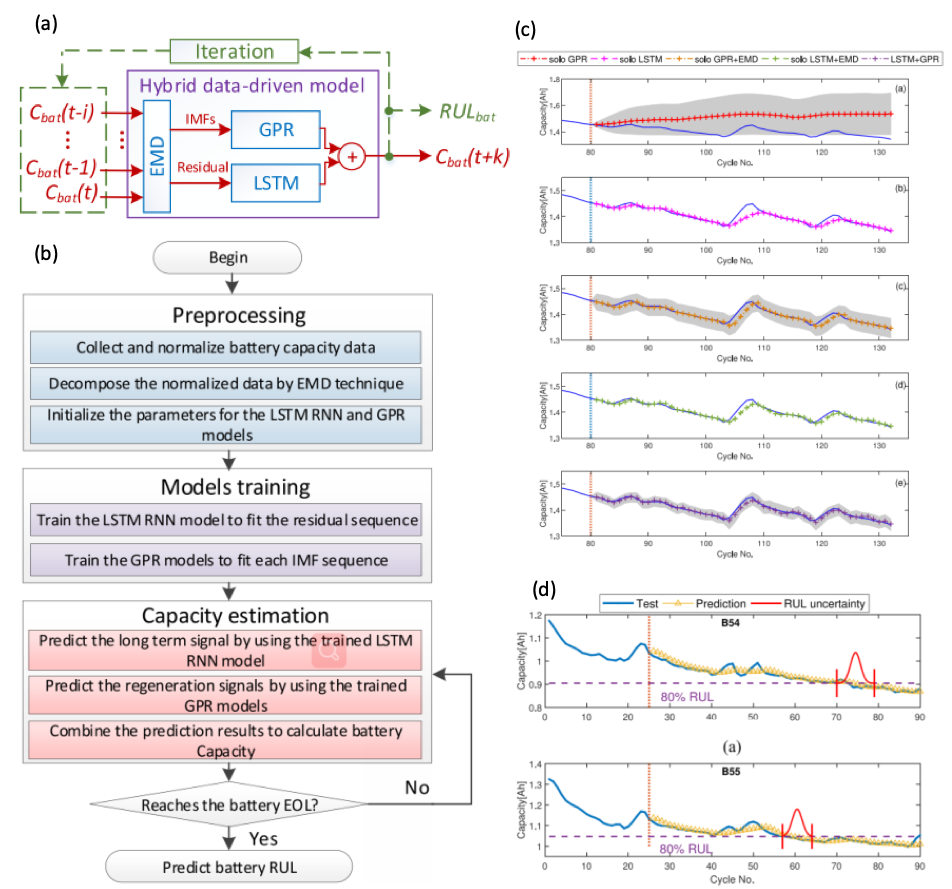A Data-Driven Approach With Uncertainty Quantification for Predicting Future Capacities and Remaining Useful Life of Lithium-ion Battery
Authors: Kailong Liu; Yunlong Shang; Quan Ouyang; Widanalage Dhammika Widanage
Abstract:
As a key technology to effectively bypass fossil fuels and promote net-zero target around the world, batteries inevitably age with time, losing the capacity to store charge and deliver it efficiently. This directly affects energy system safety and efficiency, making related battery health management (BHM) necessary. Predicting future capacities and remaining useful life (RUL) with uncertainty quantification is a key but challenging issue in the applications of BHM. This article applies advanced machine-learning techniques to achieve effective future capacities and RUL prediction for lithium-ion (Li-ion) batteries with reliable uncertainty management. To be specific, after using the empirical mode decomposition (EMD) method, the original battery capacity data is decomposed into some intrinsic mode functions (IMFs) and a residual. Then, the long short-term memory (LSTM) submodel is applied to estimate the residual while the Gaussian process regression (GPR) submodel is utilized to fit the IMFs with the uncertainty level. Consequently, both the long-term dependence of capacity and uncertainty quantification caused by the capacity regenerations can be captured directly and simultaneously. Experimental aging data from different batteries are deployed to evaluate the performance of proposed LSTM+GPR model in comparison with the solo GPR, solo LSTM, GPR+EMD, and LSTM+EMD models. Illustrative results demonstrate the combined LSTM+GPR model outperforms other counterparts and is capable of achieving accurate results for both 1-step and multistep ahead capacity predictions with less than 1.8% maximum error for all cases. Even predicting the RUL at the early battery cycle stage, the proposed data-driven approach still presents good adaptability and reliable uncertainty quantification for battery health diagnosis.


